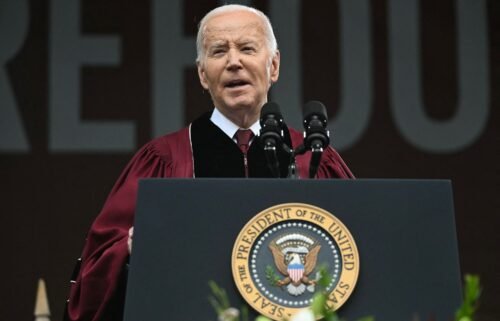IEA head: The world isn’t moving fast enough on clean energy
The global race to net-zero emissions has begun. But the world has much further to run.
The European Union, Japan, the UK and many other major world economies have set ambitious goals to reach net-zero emissions by 2050. China, the world’s biggest emitter, is aiming to be carbon neutral before 2060. And US President Joe Biden announced the nation’s return to the Paris Agreement and is putting the fight against climate change at the heart of his administration’s goals.
These announcements must now be backed up by equally ambitious actions to reach net-zero emissions as soon as possible and prevent global warming from surging past 1.5 degrees. Political, industrial and technology leaders must be laser-focused on transforming our energy infrastructure to address climate change. A big part of the challenge is that right now, we don’t have all the technologies we need to do that.
Our recent analysis at the International Energy Agency shows that almost half of the emissions reductions needed to reach net zero by 2050 may need to come from technologies that haven’t reached the market today.
It’s true that solar panels, wind turbines, electric cars, lithium-ion batteries and other trail-blazing clean energy technologies have made it possible for us to seriously envision a net-zero world. But we won’t be able to get there by 2050 without giant leaps in innovation in a range of other clean technologies — some of which are still in the lab. This is especially urgent in sectors like steel, cement, chemicals, shipping and aviation, where emissions are the hardest to reduce and cost-effective solutions are lagging behind.
Several factors will influence how quickly the world can advance and deploy these new technologies. Here are two that government decision-makers should consider:
Leadership
In these extraordinarily turbulent times, governments have the greatest capacity and responsibility to take decisive action and show companies and investors the path forward. In the United States, President Biden has signaled a commitment to spurring the kinds of major technological leaps in clean energy that we will need to make these transformational changes cheaper and smoother.
Other parts of the world are already actively laying the foundations for the clean energy industries of the future. European countries are dedicating major sums to hydrogen, energy storage and other technologies. Japan is also showing leadership on hydrogen. And China is producing solar, wind and battery technologies on a massive scale.
But global net-zero emissions cannot be achieved without everyone on board, and American leadership is critical. The United States has been at the forefront of many of the defining technological leaps of the modern era: jet planes, microchips, the internet and so much more. And more recently, US policymakers, researchers and entrepreneurs are responsible for major progress in technologies spanning renewable power, electric cars and carbon capture. US research labs, tech companies and venture capitalists are world-renowned. It’s the world’s largest economy with the deepest capital markets. What America does still matters for the world.
And America needs to make sure it doesn’t fall behind in the industries of the future. This is a strategic opportunity for countries to ensure that their economies come out of today’s crisis stronger and with the right industrial bases to supply growing markets in a world that is moving toward a clean energy future.
Investment in the private sector
The lion’s share of inventors, entrepreneurs and investors are in the private sector, which will be crucial for achieving the technological transformation that will get the world to net zero. Despite the disruptions of the Covid-19 crisis, we see encouraging signs of a renewed private sector focus on clean energy innovation.
Recent announcements by Bill Gates’ Breakthrough Energy Ventures and Elon Musk are just two examples of the strong interest from investors and business leaders in tackling the toughest clean energy innovation challenges.
But markets have already shown that, left to their own devices, they won’t bring about change quickly enough to avoid a climate disaster. If governments rise to the challenge created by the Covid crisis, they have the chance to accelerate clean energy innovation.
Governments have played — and must continue to play — a pivotal role in enabling innovators to pursue new ideas and supporting the best ones to find a route to profitability. Public funding for research and development is at the heart of this effort, and governments should increase it for clean energy technologies.
From a global perspective, more funding raises our chances of rapid technological advances. It will enable us to cheaply generate hydrogen from wind or solar power on an industrial scale and have it available on demand across the globe for use in steel mills, ships and a range of other areas. It means developing systems that can capture carbon emissions from industrial plants such as cement factories — and even from thin air — before burying the carbon safely underground or reusing it without producing further emissions.
It means expanding the reach of low-carbon electricity far beyond its current role so that it does everything from powering our cars to providing heat for our homes, offices and factories. And it means producing new biofuels to replace fossil fuels in airplanes and many other industries.
A roadmap to net zero
The IEA is committed to catalyzing global innovation efforts by tracking progress around the world, by analyzing what works (and what doesn’t) and by providing governments and companies with a place they can share knowledge and best practice. We are also keeping a close eye on ensuring the shift to clean energy remains affordable and doesn’t undermine countries’ economic health.
To help show the way ahead of the COP26 climate change conference in the United Kingdom in November, we will in May publish the world’s first comprehensive roadmap for the global energy sector — spanning power, transport, industry and buildings — to reach net-zero emissions by 2050.
Today, I’m confident that the world is entering a new age of historic progress in clean energy innovation and technology. And the race to net zero can result in many winners across the globe.


